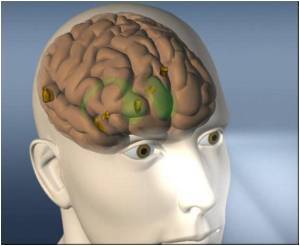
The study represents the first use of the technique in humans - called perfusion MRI - to test a drug still in development, according to the researchers at Washington University School of Medicine in St. Louis.
Perfusion MRI allowed the researchers to measure blood flow in the brain and even to determine the precise blood level of the drug, SYN115, needed to affect particular regions of the brain.
They were able to demonstrate that the drug may be a viable therapy when combined with levodopa (L-Dopa), currently the most effective treatment for patients with Parkinson's disease.
The study, a Phase 2 clinical trial, used two doses of the investigational drug. Its safety already had been tested in healthy volunteers. The goal was to determine what might be a reasonable dose for a larger clinical trial in Parkinson's disease.
Unlike L-Dopa, which works through the brain's dopamine system, SYN115 interacts with the brain's adenosine A2a receptor. That receptor can modify the effects of the neurotransmitters glutamate and dopamine and is thought to be a potential therapeutic target not only for Parkinson's disease but also for insomnia, pain, drug addiction and depression.
Advertisement
"We were able to determine both that the drug gets into the brain to exert its effects and that it has a larger effect at a higher dose," he added.
Advertisement
"The ASL method works much better at comparing brain activity over that longer time period," said Black.
His team tested 21 Parkinson's patients, comparing ASL functional MRI scans among patients who took only L-Dopa and those who took L-Dopa combined with either 20 milligrams or 60 milligrams of SYN115.
Patients who received SYN115 experienced decreased blood flow in specific brain structures, with the biggest decreases occurring in the thalamus.
"The nerve cells that send signals to the thalamus are mostly inhibitory in nature," said Black.
"So we believe these decreases represent the brain taking its foot off of the brake pedal. The more drug in the system, the less 'braking' influence there is on the thalamus, which would then allow the thalamus to send positive signals to the brain's cortex, where movements are initiated," he added.
Decreases in blood flow were more significant in subjects who had higher blood levels of the investigational drug. More study will be required to learn whether even higher doses might have a bigger influence on brain activity, said Black.
It also will be important to determine whether the decreased blood flow seen in the MRI scans will ease clinical symptoms of Parkinson's disease, such as tremors, weakness, stiffness and difficulty walking, he added.
The study is published in The Journal of Neuroscience.
Source-ANI













